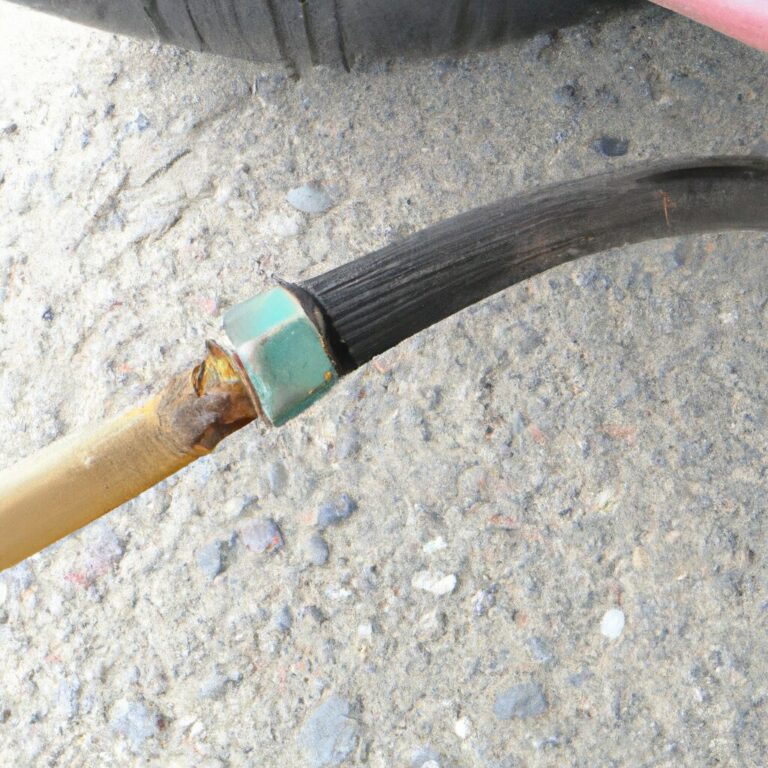Diy Emission Control System Repair Guide
Diy Emission Control System Repair Guide provides accurate and concise information for repairing your vehicle’s emission control system. In this guide, you will find step-by-step instructions on diagnosing and fixing common issues with the emission control system, helping to reduce harmful emissions and ensure your vehicle runs smoothly and efficiently.
Whether you are a car enthusiast or a novice DIYer, this guide will give you the knowledge and guidance you need to successfully repair your emission control system. With easy-to-understand explanations and clear instructions, you will be able to save time and money by tackling the repair yourself.
Keep reading to learn more about the importance of emission control systems and how this guide can help you maintain a clean and efficient vehicle.

Credit: www.autozone.com
Common Emission Control System Issues
Emission control system problems can lead to decreased engine performance.
Recognizing Symptoms:
- Check engine light turning on and staying illuminated.
- Unusual exhaust smell or excessive smoke.
- Inefficient fuel consumption.
Identifying Common Causes:
- Worn-out catalytic converter.
- Malfunctioning oxygen sensor.
- Loose or damaged gas cap.
Repairing your vehicle’s emission control system doesn’t have to be complicated.
Tools And Materials Needed
Repairing your emission control system can seem like a daunting task, but with the right tools and materials, you’ll be able to tackle it successfully. In this guide, we’ll walk you through the basic tools and specialized testing equipment you’ll need for a DIY emission control system repair. Let’s dive in!
Basic Tools
When it comes to repairing your emission control system, having the right basic tools is essential. Here is a list of the tools you’ll need:
- Screwdriver set: Allows you to remove screws and fasteners with ease.
- Socket set: Essential for loosening and tightening bolts.
- Pliers: Useful for holding and manipulating small components.
- Wire cutters: Allows you to cut and strip wires accurately.
- Wrench set: Helps you remove and tighten nuts and bolts of different sizes.
Having these basic tools in your arsenal will make the repair process smoother and more efficient.
Specialized Testing Equipment
Specialized testing equipment plays a vital role in diagnosing and repairing emission control system issues. Here are the tools you’ll need:
- Scan tool: This device connects to your vehicle’s onboard computer system and retrieves diagnostic trouble codes.
- Smoke machine: Used to test for leaks in the system by introducing smoke and observing where it escapes.
- Gas analyzer: Measures the levels of harmful gases emitted by your vehicle.
- Compression tester: Helps determine if there are any issues with the engine’s combustion process.
- Multimeter: Used to measure electrical values such as voltage, current, and resistance.
These specialized testing equipment tools enable you to pinpoint the specific problem areas, making your repair process accurate and efficient.
By having the right tools and materials on hand, you’ll be well-equipped to repair your emission control system successfully. Now that you know what you need, let’s begin the repair process!
Diy Emission Control System Repairs
Discover how to perform DIY emission control system repairs with our comprehensive guide. From diagnosing common issues to step-by-step repair instructions, this resource equips you with the knowledge and confidence to tackle emission system repairs on your own. Keep your vehicle running efficiently and help the environment with our helpful tips.
Replacing Oxygen Sensors
Replacing the oxygen sensors in your emission control system is a crucial step in ensuring optimal engine performance and reducing harmful emissions. These sensors play a vital role in monitoring the amount of oxygen in the exhaust gases, allowing your vehicle’s engine control unit (ECU) to adjust the fuel-air mixture accordingly. Over time, oxygen sensors can become contaminated or worn out, leading to inaccurate readings and decreased fuel efficiency.
To replace the oxygen sensors:
- Locate the sensors, usually positioned in the exhaust system before and after the catalytic converter.
- Use a sensor socket or an adjustable wrench to remove the old sensors.
- Apply anti-seize compound to the threads of the new sensors to aid in future removal.
- Tighten the new sensors into place using your hands or a wrench.
- Finally, clear any error codes using an OBD-II scanner to reset the ECU.
Cleaning Or Replacing Egr Valve
The EGR (Exhaust Gas Recirculation) valve is another important component of the emission control system. It helps reduce nitrogen oxide (NOx) emissions by recirculating a portion of the exhaust gases back into the engine’s combustion chambers. However, over time, the EGR valve can become clogged with carbon deposits, resulting in poor engine performance and increased emissions.
To clean or replace the EGR valve:
- Locate the EGR valve, which is often situated near the intake manifold or on the exhaust manifold.
- Remove the valve using an appropriate wrench or socket.
- Inspect the valve for any signs of carbon buildup or damage. If heavily clogged or damaged, consider replacing the valve.
- If cleaning, use a specialized EGR valve cleaner and a wire brush or cloth to remove carbon deposits.
- Reinstall the clean or new EGR valve and secure it properly.
Replacing Catalytic Converter
The catalytic converter is responsible for reducing harmful emissions by converting toxic gases into less harmful substances. Over time, it can degrade or become damaged, leading to decreased efficiency and increased pollution. If you notice a drop in fuel economy or experience a sulfur-like smell, it might be time to replace your catalytic converter.
To replace the catalytic converter:
- Locate the catalytic converter, typically located between the exhaust manifold and the muffler.
- Use a wrench or socket to remove the bolts or clamps holding the old converter in place.
- Carefully disconnect any pipes or connections connected to the converter.
- Install the new catalytic converter by reversing the removal steps.
- Ensure all connections are secure and leak-free.
Performing Emission Control System Tests
When it comes to performing emission control system tests, it is crucial to ensure your vehicle is running efficiently and meeting environmental standards. Conducting OBD-II diagnostic tests and smoke tests are essential steps in identifying any issues that may be affecting your vehicle’s emissions.
Obd-ii Diagnostic Tests
OBD-II diagnostic tests involve using a scan tool to retrieve codes from your vehicle’s onboard computer system. These codes provide valuable insights into the health of your emission control system and can help pinpoint specific issues affecting emissions.
Smoke Tests
Smoke tests are useful in detecting leaks or malfunctions in the emission control system. By introducing smoke into the system, you can visually identify any areas where smoke escapes, indicating a potential problem that needs to be addressed.
Regularly conducting these tests and addressing any issues promptly can improve your vehicle’s emissions, reducing harmful pollutants released into the environment.
Emission Control System Maintenance
The emission control system of your vehicle plays a crucial role in reducing the harmful pollutants released into the environment. Proper maintenance of this system is essential to ensure the optimal performance of your vehicle while minimizing its environmental impact. By following a DIY emission control system repair guide, you can easily perform regular maintenance tasks to keep your vehicle running efficiently. Let’s take a look at some key aspects of emission control system maintenance.
Regular Inspection And Cleaning
Regular inspection and cleaning of the emission control system components are vital in ensuring their proper functioning. Inspect the exhaust system, oxygen sensors, catalytic converter, and other relevant components for any signs of damage, corrosion, or build-up of debris. Use a gentle brush or cloth to clean these components and remove any accumulated dirt or grime. Promptly addressing any issues found during the inspection can prevent more significant problems in the future.
Using High-quality Fuel And Oil
Opting for high-quality fuel and oil is essential for maintaining the efficiency of the emission control system. Choose fuel and oil products that meet the requirements of your vehicle’s engine. Using substandard or contaminated fuel and oil can lead to increased emissions and potential damage to the emission control system components. Regularly check for fuel and oil leaks to prevent contamination and ensure smooth operation of the system.

Credit: www.ebay.com

Credit: www.ebay.com
Frequently Asked Questions Of Diy Emission Control System Repair Guide
How Do I Fix My Emission Control System?
To fix your emission control system, visit a mechanic for diagnostics and repairs. Regular maintenance can prevent issues.
How Much Does It Cost To Fix An Emission Control System?
Repairing an emission control system can cost anywhere from $100 to $1,500, depending on the extent of the issue and the specific car model.
What Does It Mean When The Emission Control System Light Comes On?
If the emission control system light comes on, it means there is an issue with controlling harmful emissions from the vehicle. Get it checked by a professional to diagnose and fix the problem.
Can I Still Drive My Car If It Says Emissions System Problem?
It is not recommended to drive your car if it indicates an emissions system problem. Get it checked by a mechanic immediately for safety and to prevent further damage.
Conclusion
Repairing your emission control system can be a daunting task, but with the right guidance, it is possible. Remember to follow the steps outlined in this DIY repair guide. By maintaining your vehicle’s emission system, you are not only reducing harmful pollutants but also ensuring a smoother and more efficient performance.

